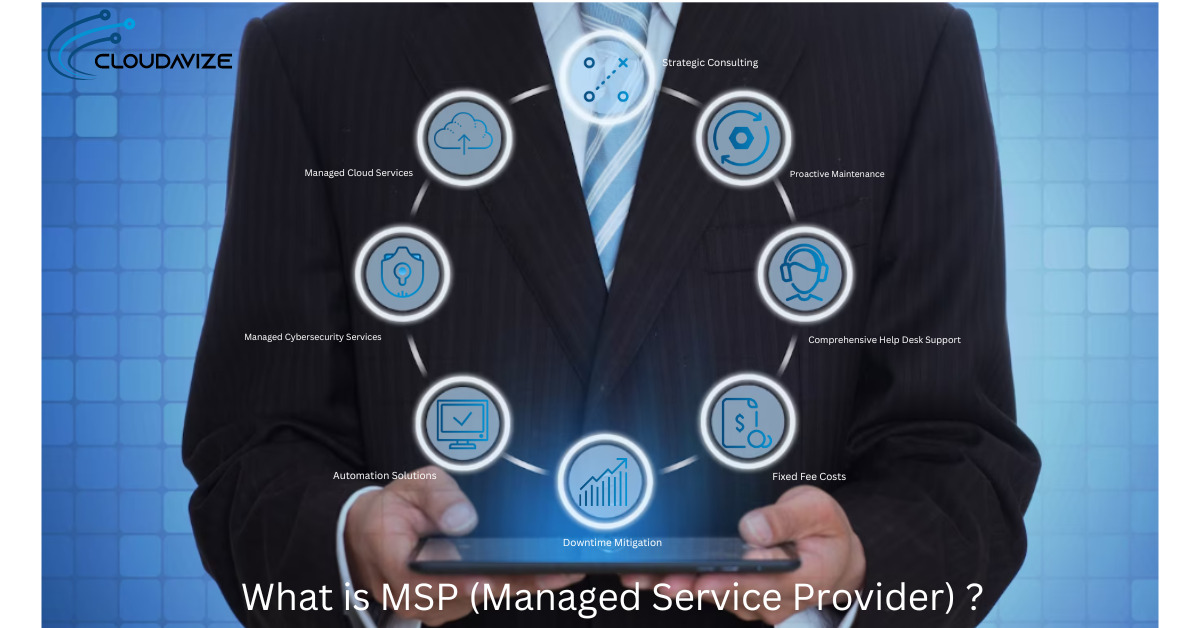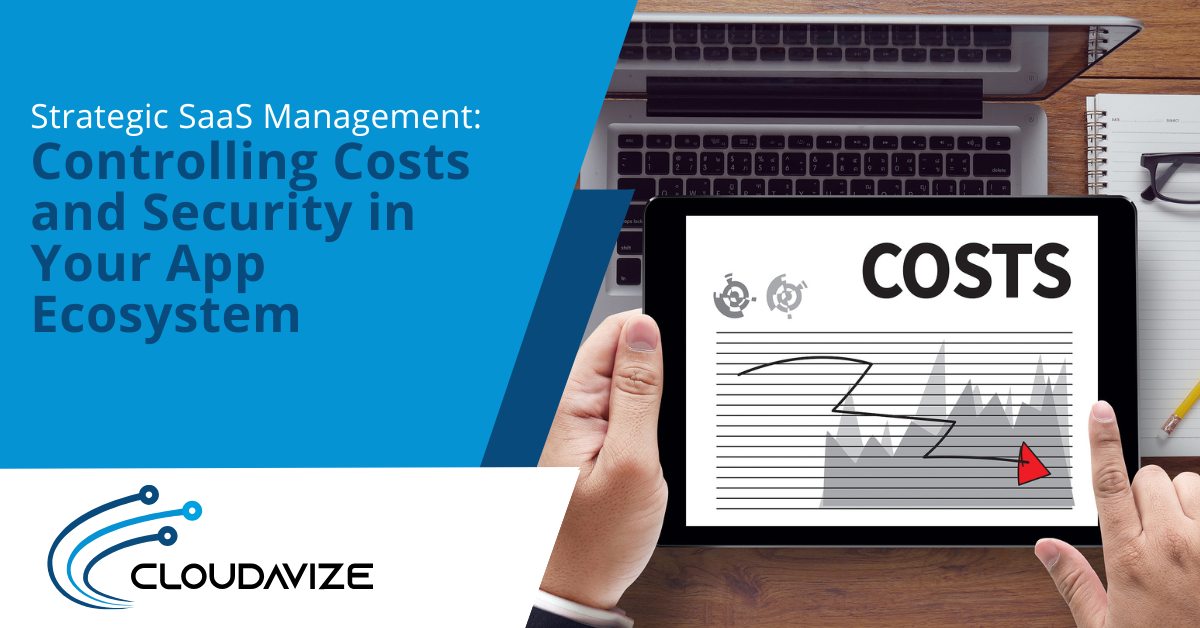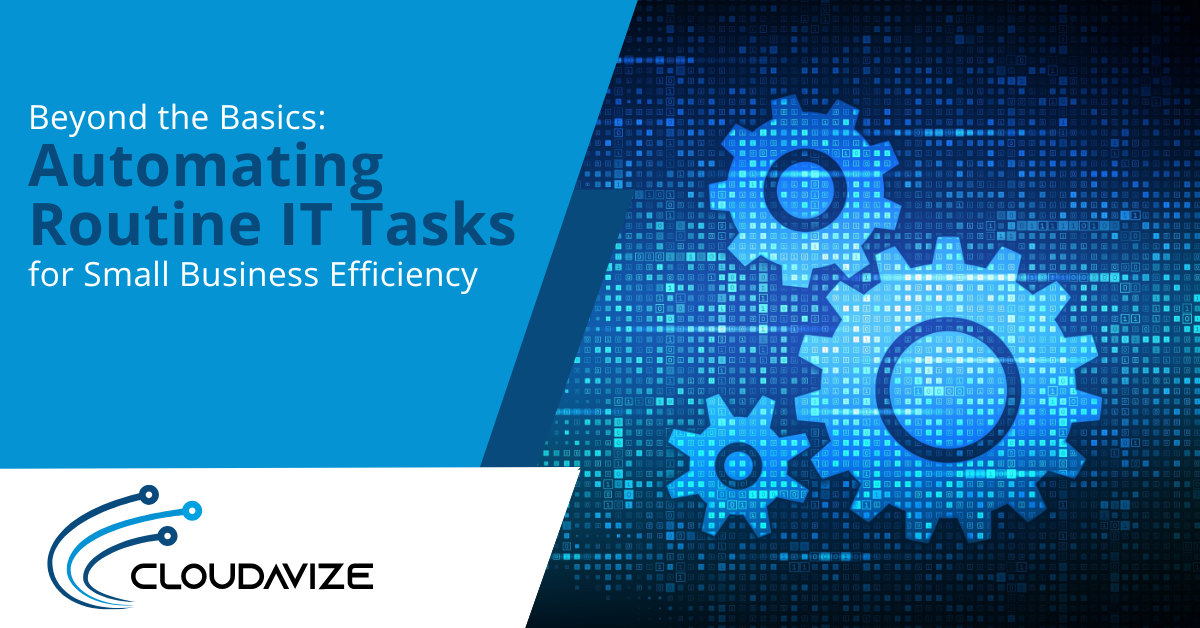An MSP, or Managed Service Provider, is an external company that remotely handles a business’s IT infrastructure and end-user systems or devices. This specialized company provides essential network management, cybersecurity, and cloud computing services to the IT, healthcare, and finance sectors. For example, MSPs ensure data protection regulation and legal compliance for the health sector while they help to enhance cloud infrastructure security for an IT company.
Since the 1990s, MSPs have delivered necessary managed IT services to all kinds of businesses, from large enterprises to small and medium-sized businesses (SMBs). Through the help of an MSP, businesses can streamline their core tasks and outsource critical IT functions.
MSPs also deliver Service Level Agreements (SLAs) that define the expected service quality and performance metrics. These agreements guarantee that businesses, especially SMBs, government agencies, and non-profit organizations, will receive ongoing and effective service customized to their unique situation. Some significant benefits of partnering with an MSP include access to specialized skills, cost savings, and scalability.
Since MSPs offer their service to their clients in a subscription format, whether fixed or consumption-based, it is up to businesses to select the suitable pricing model that aligns with their business needs.
Table of Contents
Who Hires Managed Service Providers and Why?
Non-profit organizations, government agencies, and small and medium-sized businesses (SMBs) hire MSPs to meet their IT needs. These groups often lack the resources to build and maintain a full in-house IT team, making outsourcing a strategic solution to meet operational and security demands.
Small and medium-sized businesses frequently turn to MSPs for services like network management, cloud support, and cybersecurity. With limited internal IT capacity, an MSP enables them to maintain secure and efficient systems without the overhead of hiring full-time specialists. For example, a growing retail business may hire an MSP to manage its POS systems and customer data securely across multiple locations.
Non-profit organizations, operating on tight budgets, rely on MSPs to access a wide range of IT services at predictable costs. MSPs help them focus resources on their mission while handling essential IT functions such as data backup, system updates, and compliance. A charity organization, for instance, might use an MSP to securely manage donor databases and streamline digital outreach.
Government agencies hire MSPs to modernize and safeguard public service systems. With rising demand for digital infrastructure and increased exposure to cyber threats, agencies benefit from the expertise and tools MSPs provide. For example, a local municipality might work with an MSP to implement a secure online portal for permit applications and public records access.
What does a Managed Service Provider offer?
MSPs offer a wide range of IT services for businesses, from management to the support and optimization process for their technological infrastructure. The core offerings of a Managed Service Provider include managing IT systems, ensuring data security, providing disaster recovery solutions, and IT consultation services.
Here are the core IT services offered by MSPs:
- Network Monitoring and Management:
Working 24/7 on your organization’s IT network to maintain its performance and the good health of the system operation, preventing potential nuisances. Proactive network monitoring helps prevent issues before they escalate. A Gartner study shows that daily monitoring work may reduce downtime by up to 80% on networks.
- Data Backup and Recovery:
MSPs offer strong backup and recovery solutions to maintain business availability. Ponemon Institute reported that companies suffer an average loss of $9,000 per minute during downtime if they do not have a disaster recovery plan.
- Cybersecurity Services:
MSPs protect organizations from cyber threats and offer the most modern cybersecurity solutions. They implement security measures to safeguard sensitive information and help protect the organization’s information from potential breaches. According to IBM, the global average price of a data breach was $4.88 million, which saw a significant increase of 10% from the previous year.
- IT Consulting and Strategy:
MSPs provide guidance on IT solutions so businesses can align their infrastructure with growth strategies. According to research, an ROI of 400% is possible for large corporations investing in IT consulting.
- Cloud Services and Management:
MSPs manage cloud environments for scalability, security, and efficiency. According to a recent IDC study, organizations using managed cloud services can reduce IT costs by up to 50% and gain agility and scalability.
- Software and Hardware Installation and Updates:
Service providers take care of the end-to-end software and hardware installation process. They also notify frequent updates related to new version releases for added security. A lack of up-to-date software may open your company to risks and lead to financial loss and reputational damage.
- Helpdesk Support:
24/7 support is available from MSPs to receive and manage issues associated with IT. This helpdesk support helps minimize downtime and enhance productivity by immediately resolving technical difficulties.
What Are the Benefits of Hiring a Managed Service Provider?
The benefits of hiring a Managed Service Provider (MSP) include proactive support, expert guidance, cost efficiency, scalability, and strengthened security. Partnership with an MSP enables businesses to operate smoothly without any disruptions. Their team of professionals monitor IT infrastructure and systems 24/7 to identify anomalies and address emerging issues before they cripple business operations.
Among multiple benefits of hiring MSPs, here are 5 key benefits of MSPs:
- Proactive IT Support: MSPs provide proactive monitoring and maintenance to identify and address issues that could preemptively cause problems for your business. This approach reduces downtime, improves system reliability, and ensures a more stable IT environment over time.
- Access to Expertise: MSPs have a well-staffed team with expertise in various technology fields, such as cybersecurity, networking, and cloud solutions, that businesses can leverage when required. SMBs and enterprises can leverage this knowledge without hiring additional staff, ensuring access to best-in-class tech support.
- Cost Savings: Outsourcing IT functions to an MSP results in substantial business cost savings. It enables companies to dodge expensive infrastructure investments and removes the headaches of employing their IT staff. Likewise, the predictable monthly costs associated with MSPs help manage the budget strategically, helping businesses make informed decisions.
- Scalability: MSPs offer flexible solutions that can grow as a business expands and grows. This flexibility is particularly advantageous for companies that have changing IT needs. Whether expanding to new locations or adding uses, MSPs help companies scale their services without major disruption or resource strain.
- Enhanced Security: As cybersecurity becomes more critical, many MSPs adhere to standards such as the National Institute of Standards and Technology (NIST) or other security frameworks to protect business systems and sensitive data from potential threats. They implement advanced tools like firewalls, encryption, and multi-factor authentication, helping businesses stay compliant and protected against evolving cyber risks.
How Do Managed Service Providers Operate?
Managed Service Providers (MSPs) operate by managing a company’s IT systems through a proactive and structured process. This typically starts with an assessment and risk analysis, followed by strategy development and implementation. MSPs then provide continuous monitoring, regular maintenance, and incident management to ensure system reliability. They also offer reporting and make ongoing adjustments to improve performance and align with business goals.
The Operational Methodology of Managed Service Providers typically involves the following steps:
- Assessment and Risk Analysis
- Strategy Development
- Strategy Implementation
- Continuous Monitoring
- Regular Maintenance and Updates
- Incident Management
- Reporting and Review
- Continuous Improvement and Adjustment
Assessment and Risk Analysis
The MSP evaluates IT systems through assessment and risk analysis. The whole point is to determine any risk or vulnerability between the hardware, software, network configuration, and security measures. These risks can be identified, and then MSP can figure out strategies to decrease these threats, further securing the IT environment.
Strategy Development
The next step after initial assessment is strategy development, where MSP creates a custom IT strategy that works well for your needs. This approach is essential because it provides a blueprint for the exact services that MSP will offer, including any required adjustments or upgrades to the IT infrastructure.
Strategy Implementation
After developing a strategy, MSPs move towards the execution of the agreed-upon IT strategy. During the implementation phase, your MSP will either configure the new systems, reconfigure the existing ones, or install software to ensure every single component is up and properly running. This step is vital for converting a strategic plan into an operative reality corresponding to the client’s needs.
Continuous Monitoring
The next step is all about regularly looking for potential problems or threats in the client’s IT systems using an MSP. By continuously monitoring the IT system, MSPs handle the potential problems before they can affect business operations, ensuring that the IT environment is always up and running as intended.
Regular Maintenance and Updates
IT systems should be maintained and updated regularly. Regular system updates and patches, hardware and software upgrades, etc., will be the MSP’s responsibility. This maintenance ensures that your application’s IT infrastructure operates efficiently and is not exposed to vulnerabilities.
Incident Management
Incident Management is the MSP’s response whenever issues appear with your IT. Whether troubleshooting from a distance or providing on-site support, the MSP quickly gets into action to fix things and minimize downtime for business operations with minimal impact.
Reporting and Review
The MSP provides the client with scheduled reports on how their IT systems are running. These reports show any problems or incidents and the steps necessary to address them. That kind of visibility allows clients to understand the health and value of their IT infrastructure.
Continuous Improvement and Adjustment
This is where the MSP reviews and improves its IT strategy to adapt to changes in client demands or new technologies. This allows IT to ensure the infrastructure stays up-to-date and continues to help advance business objectives.
What Are the Best Practices for Managed Service Providers?
The best practices for managed service providers include setting clear expectations, maintaining transparency, securing client environments, and staying updated with evolving technologies. These practices are designed to define service levels, automate tasks, strengthen security, and monitor performance for consistent service, reliable operations, and improved client satisfaction across all touchpoints.
- Establish Clear SLAs (Service Level Agreements): Define the scope of service, expected outcomes, timelines, and responsibilities clearly at the beginning to avoid future conflict or confusion. Establishing a clear SLA allows MSPs to set achievable client expectations and provide a realistic benchmark for performance.
- Maintain Transparent Communication: Keep clients and stakeholders informed about the overall process through regular updates, issue tracking, and defined escalation procedures. With a clear communication protocol, MSPs can clear up any misunderstandings and resolve concerns quickly, fostering long-term trust.
- Document Everything: MSPs should maintain a detailed record of IT assets, configurations, incidents, and resolutions. Developing a culture of proper documentation ensures continuity, especially during team transitions or audits.
- Automate Where Possible: Use automation tools for patch management, system monitoring, and alerts. Utilizing automation ensures improvement in efficiency, reduction of manual errors, and quicker response times.
- Prioritize Security: Implementation of strong security measures like multi-factor authentication (MFA), regular backups, and zero-trust principles keeps sensitive data safe and secure from data breaches, unauthorized access, and other cyber threats. A strong security posture protects both MSP operations and client data.
- Regular Performance Reviews: MSPs should initiate periodic client meetings to review service performance and align IT strategies. These reviews, conducted formally or informally, help identify gaps and implement improvements that match customer expectations. As a result, it builds a stronger client-vendor relationship.
- Train Continuously: MSPs should stay updated with evolving technologies, security threats, and compliance standards to help clients avoid irregularities and legal disputes. Facilitating continuous training sessions allows the team to stay current and handle emerging challenges effectively.
What Types of Managed Service Providers Exist?
Managed Service Providers (MSPs) are classified by the size of their client base and the services they offer. Based on client size, MSPs range from lower-level (basic monitoring for small businesses) to mid-level (broader services for mid-sized firms) and high-level (comprehensive IT management for all business sizes). By service type, MSPs may specialize in areas such as cloud support, proactive monitoring, remote troubleshooting, centralized infrastructure management, or data backup and recovery, each tailored to specific business needs.
- Categorization by Customer Base Size:
MSPs can be divided into three tiers based on the size and complexity of the customer base they cater to:
- Lower-Level MSPs: These providers focus on reporting and alerting services. MSPs monitor IT systems, provide alerts about issues, and create performance reports. The targeted clientele of lower-level MSPs is small businesses that require minimal IT support.
- Mid-Level MSPs: These MSPs cater to mid-sized organizations, offering a broader range of services. Services offered by these providers include system installation, upgrades, cybersecurity, data backup and recovery, and IT consulting. They have enough resources and expertise to manage more complex IT infrastructures.
- High-Level MSPs: They provide end-to-end IT management services to organizations of all sizes. They manage highly sophisticated IT environments, and their service portfolio spans routine maintenance, disaster recovery, and IT strategy development across various industries.
- Categorization by Service Offered:
MSPs can also be classified based on their specific service offerings:
- Cloud Support MSPs: These MSPs have a specialization in cloud computing services. Their expertise in planning, managing, and implementing cloud infrastructure and applications helps clients leverage cloud technology benefits. These benefits are scalability, flexibility, and data security with optimal performance enhancement.
- Proactive Support MSPs: They dedicate their resources to helping businesses prevent IT issues before they occur. These MSPs deploy advanced monitoring tools and follow a proactive approach for early problem detection, which helps minimize operational disruption while prioritizing uptime and reliability.
- Monitoring MSPs: Their focus is to observe IT systems continuously. They diligently monitor the health, performance, and availability of various components like servers, networks, apps, and databases. They ensure everything works well so businesses can carry out IT operations smoothly and uninterruptedly.
- Remote Support MSPs: They work remotely and provide assistance and troubleshooting services without being physically present at the client’s site. It is suitable for organizations seeking quick problem resolution without needing on-site interventions.
- Centralized Management MSPs: These MSPs focus on streamlining the management of clients’ IT infrastructure through centralized management platforms. They maintain standardized operations, simplify IT management, and reduce the complexities of overseeing multiple systems.
- Backup and Recovery MSPs: These MSPs specialize in data backup and recovery strategies, ensuring that essential data is consistently backed up, securely stored, and can be rapidly retrieved in instances of data loss. Their expertise in maintaining data integrity and providing robust solutions helps safeguard IT infrastructures against potential disasters.
What Challenges Do Managed Service Providers Face?
Managed Service Providers (MSPs) face challenges such as client dependency, limited control, security risks, communication gaps, and pricing concerns. Relying on an external provider can impact operations if issues arise on their end, while remote access to sensitive data introduces potential security concerns and reduces in-house oversight.
- Dependency: Hiring an external service provider for your critical IT functions means dependence. If the MSP is undergoing operational or technical problems of its own, it could end up affecting your business.
- Limited Control: Using an MSP to take over all your IT functions also means you have limited autonomy in managing systems and processes.
- Security Concerns: Entrusting sensitive data and granting remote access to external parties has inherent security risks.
- Communication Challenges: The inability to communicate well with an outsourced third-party service provider might cause issues and requirements that must be resolved promptly.
- Cost Considerations: Companies must examine price points and service-level agreements because not all contracts are created equally. This ensures that an MSP keeps costs low by billing additional fees.
What Are the Common Pricing Models for Managed Service Providers?
Managed Service Providers (MSPs) offer a variety of pricing structures to cater to the diverse needs of businesses. Here are some common pricing models:
- Tiered Pricing
- Per-user or Per-device Pricing
- Project-based Pricing
- Customized Pricing
Each of these is designed to provide price variety so organizations can choose a model based on size, traditional work, and budget-specific needs. Engaging with MSPs about these pricing models and pricing details will enable businesses to make well-informed decisions that balance cost and service quality. Here are a few commonly adopted pricing models:
Tiered Pricing
Under a tiered pricing model, MSPs present different service packages at varying prices. Companies choose a form that fits their needs and price point, from basic support to full IT management. This model is great for smaller organizations trying to scale with versatile IT offerings.
Per-User or Per-Device Pricing
In a per-user or per-device pricing model, businesses are charged a single rate per user or device. The simplicity of budgeting based on the number of users or devices is ideal for organizations with a stable number of users or devices. It predicts costs, making IT expenses more straightforward to manage.
Project-Based Pricing
Businesses opting for a project-based model pay a set price based on each particular project or one-time task. It’s a project-based billing system where costs are determined by the scope and duration of the project, making it suitable for businesses with temporary IT requirements. This allows for transparent budgeting and targeted resource use.
Customized Pricing
With Customized Pricing, processes are analyzed at the client level, and a tailored solution is derived. This model is perfect for corporations with particular or abnormal IT needs, ensuring businesses only pay for the services they use.
Elevate Your IT Infrastructure with Managed Services
Maintaining a robust and secure IT infrastructure in the digital age is crucial for businesses of all sizes. Proactive IT support, strategic solutions, and stringent security measures can significantly enhance your business operations. However, managing these aspects can be complex and time-consuming. This is where a trusted partner can make a difference. Based in Dallas, Texas, and serving all DFW areas, Cloudavize is a premier Managed Service Provider (MSP) committed to delivering strategic, robust, and reliable Managed IT solutions. With Cloudavize, you can focus on your core operations, knowing your IT infrastructure is in capable hands. Elevate your IT infrastructure with Cloudavize for more secure and efficient business continuity.
Contact us today to learn more about our services and how we can support your business.



